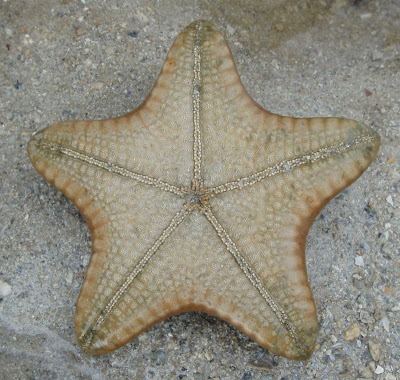First of all, most people would be unfamiliar with Sultan Shoal (like me), so here's a short introduction of it I got from Wikipedia (http://en.wikipedia.org/wiki/Sultan_Shoal_Lighthouse):
"The Sultan Shoal Lighthouse (苏丹浅滩灯塔) is a lighthouse located on the island of Sultan Shoal in the Western Anchorage of Singapore about 8 km south of the western tip of Singapore Island. The lighthouse tower is painted white while the keeper's house roof is red and is of a mixture of Oriental and Victorian design.
The island also houses two staff chalets which is managed by the Port Authority of Singapore. "
So, here a picture of the Sultan Shoal Lighthouse (picture below). A closer look at the lighthouse tower suggests that it was built in 1895!
A closer look at the lighthouse tower suggests that it was built in 1895!Anyway, besides taking a look at the lighthouse. Our purpose of going there was also to check out what kind of marine life resides on the island.
I did got a little shock when I first saw the lagoon on the island. It was an enclosed lagoon, save for the little holes at two different sides of the enclosure to ensure water circulation.
However, this man-made structure or swimming pool did not prevent marine life from finding their way into the lagoon. Here's first 'discovery', some nerites which had beautiful shells (picture below).
 Discovery Note:
Discovery Note:1. They are commonly found on rocky shores.
2. Further studies of them could be done (to find new species), as a recent paper in 2008 based on 31 survey sites over a period of 10 years yielded 19 species with 6 new discovered species for Singapore.
3. Do be careful when you walk around pools and small rocks, as you might be stepping on the eggs of nerites (small white egg capsules).
4. Read more about nerites @ http://www.wildsingapore.com/wildfacts/mollusca/gastropoda/neritidae/neritidae.htm.
As there was not much life to be seen on the exposed shore, we decided to turn over some rocks around the area as some marine animals like to hide under them to prevent themselves from suffering from dessication (the process of drying out). And that's where the second 'discovery' was spotted. Can you spot it (picture below)?
 It is a sponge crab and here is its underside (picture below).
It is a sponge crab and here is its underside (picture below). Discovery Note:
Discovery Note:1. They are called sponge crabs as they usually have a living sponge on its top carapace.
2. It is not born together with the sponge if you are wondering. The crab uses its pincers to snap out a cap out of a living sponge to fit it over its body.
3. The purpose of this is for camouflage and protection from its predators (since sponges usually leaves a 'bad' taste).
4. To read more about it, visit http://www.wildsingapore.com/wildfacts/crustacea/crab/dromiidae/dromiidae.htm.
And there was even a first sighting! A electric blue fiddler crab (Uca tetragonon) (picture below)! This was found by Prof Peter Ng, the crab expert who was also with us. Third 'discovery'!
 Discovery Note:
Discovery Note:1. These crabs are an important marker or indicator to tell us that there are healthy reefs around.
And also for the first time, I managed to capture a goby and snapping shrimp from the same burrow! Fourth 'discovery' (picture below).
 Discovery Note:
Discovery Note:1. They share a "you scratch my back, i scratch your back" relationship in this situation.
2. The goby is in charge of looking out for danger while the shrimp is in charge of digging and maintaining their shared burrow.
And for the last, fifth 'discovery' of this entry. Here is a feather star (picture below)!
 Discovery Note:
Discovery Note:1. These creatures are more commonly seen during diving trips compared to Inter-tidal walks.
2. Like brittle stars, they are fragile and their arms may break easily, so either handle them with extreme care or don't handle them at all. =)
3. If you look closely at feather stars, you may sometimes find a well-camouflaged crab or shrimp living on it. So always take many looks when you see one of these.
4. Read more about them @ http://www.wildsingapore.com/wildfacts/echinodermata/crinoidea/crinoidea.htm.
Before I end this post, here's a look at the lighthouse again (picture below).
 At of course, thanks to LK for making this trip possible and many friends who went and made the trip fun filling! =D
At of course, thanks to LK for making this trip possible and many friends who went and made the trip fun filling! =DExtra: Read and see more of the organisams we saw during this trip on
a) KS's blog entry
b) Tidechaser's blog entry
c) Manta's blog entry



















































